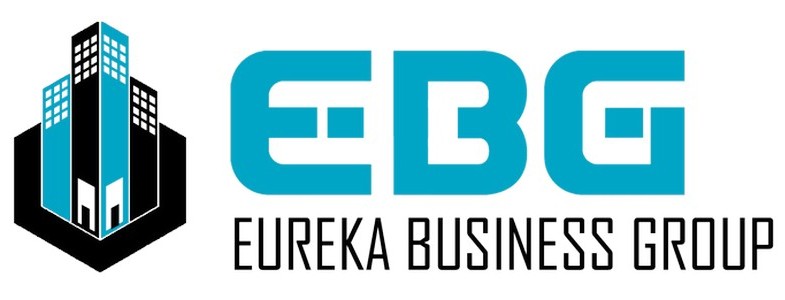- Home
- Industrial
- Industrial Investors Resources
- Common Pitfalls in Industrial Flex Investing and How to Avoid Them!
Common Pitfalls in Industrial Flex Investing and How to Avoid Them!
Industrial flex spaces have been gaining popularity among investors due to their versatility and potential for high returns. These spaces, often a blend of warehouse, office, and even showroom areas, can cater to various businesses, from e-commerce and logistics to local startups. However, as with any investment, industrial flex investing comes with risks. Avoiding these pitfalls can mean the difference between a high-performing property and a costly mistake. Here’s a closer look at some of the most common pitfalls in industrial flex investing—and how to sidestep them.
1. Misunderstanding Market Demand
Industrial flex spaces can be appealing for their adaptability, but not all markets have a strong demand for them. Some investors make the mistake of assuming flex spaces are universally desirable, only to discover limited interest once they’ve purchased or developed a property.
Solution: Conduct a thorough market analysis before investing. Look at local businesses and industries that could benefit from flex spaces and evaluate the market’s supply and demand. Consulting with local brokers or conducting feasibility studies can help you avoid markets with limited demand for flex spaces.
2. Failing to Verify Zoning and Permits
Zoning laws and permits are among the biggest hurdles in industrial flex investing. Investors sometimes assume a property will be flexible for different uses, only to discover it’s zoned for a more restrictive use. Issues with permits or zoning can lead to costly adjustments, delays, or, in extreme cases, having to abandon plans entirely.
Solution: Before purchasing, work with a zoning attorney or commercial real estate broker familiar with local regulations to verify zoning allowances. Check which businesses and types of work are legally permitted in the area and ensure your intended tenants align with these uses. If rezoning is an option, factor in both the cost and time associated with obtaining it.
3. Overlooking Property Condition and Maintenance Requirements
Industrial flex spaces can be prone to wear and tear, especially if used by logistics, storage, or manufacturing businesses. Investors may underestimate the costs associated with maintaining or upgrading older properties. Over time, unplanned maintenance or surprise repairs can erode profit margins.
Solution: Conduct a comprehensive property inspection and be diligent in assessing structural integrity, roofing, HVAC, plumbing, and electrical systems. Budget for maintenance costs based on the property’s condition and age, and consider setting up a reserve fund to cover unexpected expenses.
4. Ignoring Tenant Mix and Vacancy Risks
A common mistake in industrial flex investing is not considering the tenant mix and the risk of vacancies. Relying too heavily on a single tenant or ignoring tenant diversity can lead to revenue loss if that tenant moves out or faces financial issues. High vacancy rates can be particularly damaging in this sector, as it may take time to find suitable replacements.
Solution: Aim for a mix of tenants with complementary needs and stability. For instance, having a logistics company and a small distribution firm can create a balanced tenant mix. Also, consider shorter lease terms with renewal options. This approach provides a cushion against vacancy risks and potential rent increases, making it easier to maintain consistent cash flow.
5. Overestimating Rental Income
Some investors overestimate rental income based on peak market conditions or unrealistic comparisons. Industrial flex rents can fluctuate based on economic cycles and demand-supply dynamics, and failing to account for these fluctuations may result in revenue shortfalls.
Solution: Base income projections on conservative estimates and historical data rather than peak conditions. Account for potential periods of vacancy and consider rental rates in similar properties within a 3-5 mile radius to set a realistic price. Additionally, build a buffer into your financial planning for fluctuations in rental income, allowing for adjustments as the market shifts.
6. Inadequate Parking and Loading Space
Industrial flex properties require ample parking and loading spaces to accommodate various tenant needs. Some investors overlook this aspect, leading to tenant dissatisfaction and a reduced tenant pool. Without sufficient loading docks or parking, tenants like logistics firms, retail businesses, or manufacturers may look elsewhere.
Solution: Evaluate parking, loading, and accessibility in your initial investment assessment. Industrial properties with more than one use may need segmented spaces—parking for office workers, loading areas for warehousing, and secure zones for storage. Ensure the property layout can cater to different tenant needs without overcrowding, as it significantly impacts tenant retention and appeal.
7. Neglecting Technology and Connectivity Needs
With the rise of e-commerce and tech-savvy businesses, industrial flex tenants often have higher technology and connectivity demands. Investors who overlook technological amenities like reliable internet, security systems, or smart facility management tools may find it challenging to attract quality tenants.
Solution: When evaluating a property, consider connectivity as a key factor. Invest in strong internet infrastructure and verify the area’s ability to support tenants’ tech requirements. Consult with a commercial real estate technology advisor if needed. Additionally, enhancing security and installing smart facility systems can make the property more attractive to potential tenants.
8. Failing to Properly Assess Location Accessibility
Accessibility is critical for industrial flex properties, especially for tenants who depend on frequent deliveries and shipments. If a property isn’t close to major highways, transit hubs, or airports, it may limit your potential tenant pool and reduce demand.
Solution: Evaluate the property’s proximity to essential infrastructure, including highways, public transportation, and airports. While you can’t change the location, you can weigh its accessibility against your target tenant’s needs. If a property lacks easy access but has other appealing qualities, consider adjusting your rental rates or offering incentives to attract tenants.
9. Underestimating Competition
As industrial flex spaces gain popularity, the competition in this market is intensifying. Investors who don’t account for nearby properties or fail to differentiate their space may struggle to attract tenants or compete on rental rates.
Solution: Analyze the competition within your area thoroughly. Evaluate their rental rates, amenities, tenant base, and property conditions. Differentiate your property by offering unique features, flexible lease terms, or upgraded facilities. Understanding your competitive advantage can help you stand out and secure higher occupancy.
10. Ignoring the Importance of Lease Structuring
Lease structuring is vital in industrial flex investing, as it directly impacts cash flow stability and tenant retention. Inflexible or complex leases may deter prospective tenants, while poorly structured leases may expose investors to unnecessary risks, like covering unexpected maintenance costs.
Solution: Work with a real estate attorney to structure leases that balance flexibility for tenants with protections for the property owner. Triple-net leases, where tenants cover maintenance, property taxes, and insurance, can help protect your cash flow, though these may not be feasible for all tenant types. Clearly define responsibilities and create an attractive yet protective leasing structure.
11. Lack of a Long-Term Strategy
Investing in industrial flex space without a long-term strategy can lead to missed opportunities or poor investment decisions. Investors sometimes focus on short-term gains, which can be risky, especially if the property requires significant upkeep or upgrades over time.
Solution: Approach industrial flex investing with a clear strategy that aligns with your financial goals. Consider whether your plan is to hold, sell, or redevelop in the long term, and ensure your cash flow and expense projections align with this goal. A long-term approach helps you make sound investment decisions and can maximize your return on investment.
Final Thoughts
Industrial flex spaces offer unique investment opportunities but come with their own set of challenges. By recognizing and proactively addressing these common pitfalls, investors can maximize their returns and reduce risk. Thorough due diligence, market understanding, and strategic planning are essential to making the most of an industrial flex property investment. If approached carefully, these properties can provide a diversified income stream and a foothold in the dynamic commercial real estate market.



